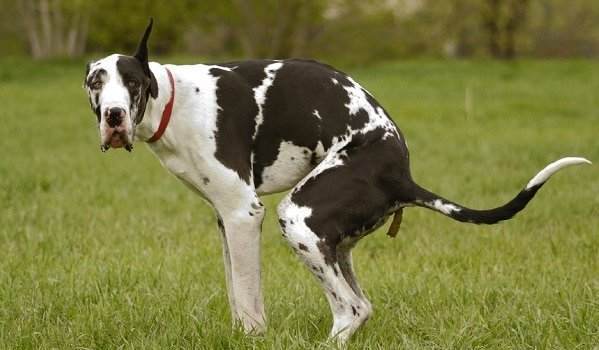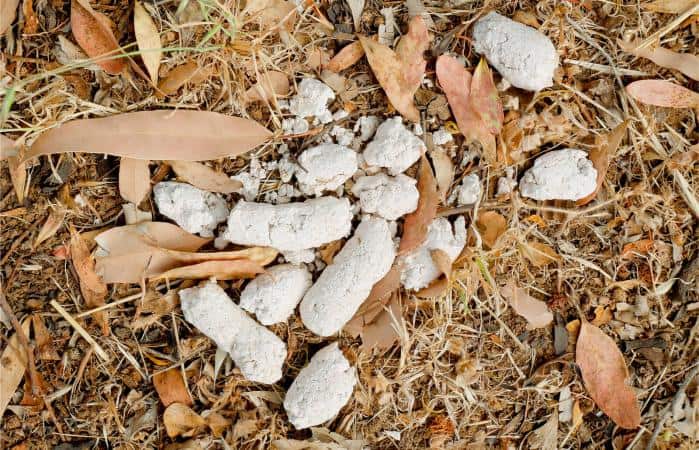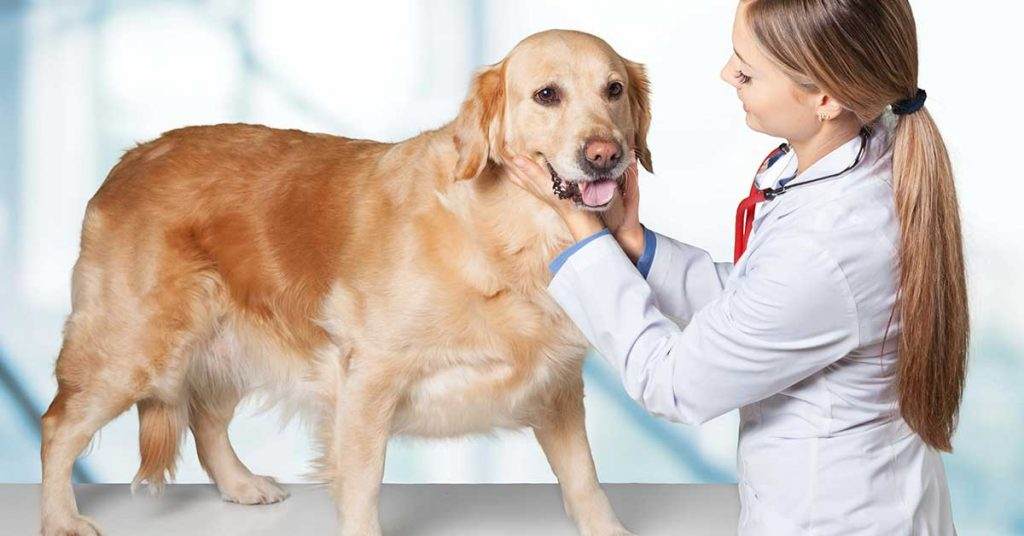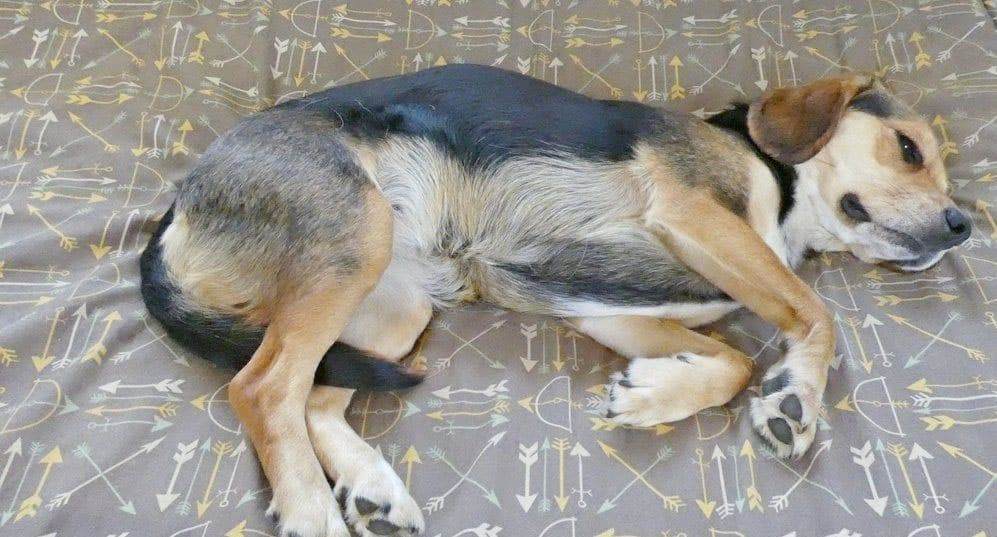It may sound gross, but there’s a whole lot you can learn about your dog’s health by just looking at his poop. The bowel habit of your dog is a reliable indicator of his digestive health.
Any slight change in the shape, color, and texture of your dog’s excrement can reveal vital signs of infection and a long host of other serious health issues such as cancer.
But how do you determine if your dog is healthy by just looking at his stool? Read on to find out.
Characteristics of a Dog’s Poop
Dogs’ poops have a series of characteristics that are considered normal, and a few abnormal ones that should get you worried.
To classify them broadly, dogs have four different characteristics — color, coating, content, and consistency. For the content part, only a vet has the technical expertise, experience, and tool-set to analyze it thoroughly and point out some of the health issues your dog is exposed to.
As for the rest, all it takes is your naked eye and some little bit of tolerance and patience to figure out if your dog is healthy or suffering in silence.
For starters, a dog’s poop is healthy when it’s a bit firm, more like a play-dough. Its shape should be more log-like, with some bit of cleaves in it. On the overall, all the pieces making up the turd should be strategically arranged such that were you to roll or disturb it in any way, the excrement would crumble into smaller pieces.
Again, a dog’s poop is healthy when it doesn’t feature any form of coating at all. There should be no sheath-like feature covering the whole load. Meaning, if your pooch is producing a somewhat firm, chocolate stool that’s completely coating free, then don’t freak — that’s what is considered normal in the vet world.
What Should Alarm You Look at Your Dog’s Poop
The four characteristics of your dog’s poop should clue you in on the health status of your poop.
That is particularly important where you suspect your dog may be ill. The sight of poop might NOT be that pleasant, but it surely can tell you a whole lot about the health status of your dog or if there’s a possibility of him being sick or if he’s in a clean bill of health and that there’s nothing of concern.
The Content in the Poop
An experienced vet can better analyze the content in your dog’s poop, with the help of a set of tools that will be helping him narrow down to the tiniest elements of the poop content. A microscope may come in handy.
But that’s NOT to say there’s nothing you can get by just looking at what’s in your dog’s poop. Here’s a list of the things to look for:
Worms
If a fresh sample of your dog’s stool contains any trace of worms, then that should come as an urgent call to rush him to your vet. The reason being, your dogs may be infested with worms and maybe in dire need of some serious de-worming.
It’s, however, essential to make sure that the poop you’re sampling is fresh. Otherwise, you might be panicking over a series of worms that found their way into the poop later on after your dog had responded to the call of nature.
Fur
There’s nothing ordinary about having fur in your dog’s poop. If anything, this is a clear indication that you may be over-grooming your dog or the dog is allergic to something that you’re required to look into.
Fur in your dog’s poop could also indicate that your dog has a severe skin disease. The point is to make a habit of digging into your dog’s poop for any trace of fur, and should you by any chance find it, talk to your vet about it in great detail and find out if there’s a need for a blood test or any other form of diagnosis.
Foreign Materials
Your dog’s poop may contain rocks, glass, plastics, and even money. There’s nothing much to worry about this as it only goes to show that your dog ingested something it shouldn’t have.
However, if the foreign objects keep on appearing in your dog’s stool, then you might want to call your vet or take him for an X-ray to make sure that no foreign object remains lodged in your dog’s system. If they spot one, your vet should be able to make arrangements for removing the object surgically.
The problem may be worsening should you start noticing some pieces of plastics or clothes in your dog’s stool. Make a point to call your vet immediately, and should it turn out that the dog still has any trace of these items in their body, you should quickly make arrangements for removing the items surgically.
The Coating on the Poop
Ever tried picking your dog’s stool off the ground or grass and there was a sheath-like coating of mucus left behind?
Well, this is a clear indication that your dog is suffering from bowel inflammation and that you should be thinking about contacting your local vet for diagnosing the dog for diarrhea or any other digestive issue as you figure out your next move.
The Color of Your Dog’s Poop
The color of your dog’s poop could also hint something important on your dog’s health. Here’s a simple guide that you can use to find out if your dog is healthy or unhealthy based on the color of poop.
Brown: A healthy pup should produce a bowel movement that’s chocolate brown or just brown. Any deviation from that should be hinting at something worth looking into.
Green: Where your dog is producing green stool, then chances are the dog is feasting on grass — and the reason for that could be that the dog is suffering from a stomach upset and that he’s eating grass to soothe it up.
Black or Maroon Poop: If your dog is producing black or maroon poop, there a fair chance that the dog is experiencing some severe bleeding in the stomach. You can contact your vet to tell you if your dog is suffering from any form of health complication.
Red Streaks: This is another sign of your dog bleeding in the stomach. The red streak indicates that the bleeding could be happening from the lower gastrointestinal tract, and that’s the reason it’s coming out before it has achieved full clot.
Yellow Stool: Yellow stool always hints toward a liver, gallbladder, or pancreatic problem.
White Spots: The white, rice-like spots in your pup’s poop could mean your dog has worms. You might want to de-worm or at least talk to your vet about it.
Consistency
To evaluate your dog’s stool for consistency, your vet will use a scale that runs from one to seven, where one stands for extremely firm — almost to a level of going dry, and seven denoting a consistency that’s runny or diarrhea-like.
The most optimal poop consistency is level two. But just in case your dog’s poop comes off as too lose, that’s still no reason for alarm. All you’ll be required to do is monitor the dog’s poop, and you’ll see it get softer and softer and even firm up sometimes.
When making wellness visits to your vet, it’s crucial that you carry with you a few stool samples. This is important in making comparisons. Should there be any sign of unhealthy stool, your vet will be able to make some comparison and understand the root cause of the problem.
And where your dog is showing some severe signs of illness, but it’s still producing healthy stool, you may still want to bring the stool with you for your vet to evaluate its content.
Generally, stool samples are essential to your vet as they can help him run advanced tests on the dog and make necessary comparisons before directing you on the next step.
How do You Collect Dog Poop Samples?
As an enthusiastic dog owner, you must have figured out different ways to clean up your dog’s excrement without contaminating yourself. Whether you use a poop scooper or you bought some biodegradable bags, cleaning your dog’s feces is the most natural thing you can do.
All you have to do is find a trick to pick the poop from one place and move them to the toilet, and that’s pretty much like it.
However, if you’re collecting a poop sample that you’re supposed to take to your vet, then it’s crucial that you be super-careful while at it. First, make sure the bag you’re using to collect the poop is clean enough NOT to contaminate the poop in any way.
You’re also advised to be careful when picking the poop to avoid breaking it into tiny pieces. And after you pick it up, you might want to carefully place it in a clean and shallow plastic container that’s lidded up.
It’s also essential that you present the sample to your vet when it’s still fresh. So where you’re planning to visit your vet at a later date, refrigerate the sample to keep it fresh.
If the poop is too runny, use your phone to take a few clear photos that you’ll be showing to your vet to evaluate it for consistency.
To get a watery poop sample into a container, you might want to use a craft stick to scoop it up and load it into the container.
In whatever you do, you’re NOT supposed to take stool samples that have been sitting around for long. Avoid the samples that have been exposed to the sun’s heat for far too long.
For what’s worth, these samples may be containing some traces of dirt or parasites that are NOT part of the excrement.
Worth mentioning is that cleaning your dog’s excrement almost immediately after they have had their bowel movement is extremely beneficial to your dog’s health. Leaving your dog’s poop to lie around may end up tempting the dog into eating it up.
There’s also the possibility of the poop slipping into the water table or dog’s food and contaminating everything. Also, after you’re done cleaning up your dog’s mess, simple logic demands that you wash your hands immediately after whether or NOT you were wearing a pair of gloves while at it.

The Environmental Implications of Dogs’ Stool
The Environment Protection Agency also lists dog’s poop as an environmental pollutant that can get you on the wrong side of the law. It’s in fact placed in the same category as toxic chemicals.
In other words, dog stools are NOT fertilizers. They’ve also been found to be extremely toxic to lawns. Besides, they tend to carry lots of diseases with them that can prove to be detrimental, NOT only to other dogs but to humans and other animals as well.
EPA even goes a step further to warn about dog’s dropping leading to the deterioration of oxygen levels in case they find their way into a nearby water body. This has the effect of making the fish or seafood people consume to become asphyxiated.
What Else Can Your Dog’s Poop Tell You About his Health?
There are other signs to look for while picking up your dog’s poop to ascertain if he’s healthy or sick.
Here’s a list of them:
Too Much Poop, accompanied by a Nasty Smell
Too much poop could indicate that you’re poorly dieting your dog or that the dog is encountering some difficulties digesting the food he consumes.
The amount of excrement your dog produces is directly proportional to the number of indigestible substances in the food he eats. In which case, if the food that your dog is eating has so much indigestible content in it, then you can expect the dog to produce an excessive amount of excrement.
Naturally, dogs are meant to be consuming raw meat. Their digestive system will, therefore, be more lenient on digesting meat content. But where the dog is consuming high amounts of low-quality kibble, then you can expect the amount of poop he produces to increase drastically.
The same applies to where you find the stench of the poop produced to be sickening. However, before you make any plan to change your dog’s diet, you might want to talk to your vet for some advice on the most appropriate way to go about it.
Tiny, Rock-like Stool
Small, rock-like stool or when your dog fails to poop at all is a clear indication of constipation. Happens a lot when your dog is feeding on too much insoluble fiber and NOT consuming enough liquid. So the food gets gummed up in the stomach and the next thing you know he’s pooping tiny, rock-like stool.
But that’s NOT always the case. So many other factors could also have a hand in your dog’s constipation. The most common one being your long-haired furry friend might be spending the bulk of his time licking himself. So he ends up ingesting the fur.
Or the dog could even be suffering from osteoarthritis, which will be producing chronic pain at the hind legs and hips, thus making it hard for the dog to maintain the correct posture while pooping. So the dog holds his poop in for much longer than it’s expected, thus stirring constipation.
Constipation has so many layers to it. Another possibility could be that your dog is suffering from an intestinal obstruction. This happens a whole lot when the dog accidentally ingests a foreign object such as a sock or rock.
When left for long, this object can threaten the dog’s life. Meaning you might want to check in the dog for an X-ray should you notice that he’s having a hard time pooping and displaying other symptoms that might seem to suggest he’s consumed a foreign object.
When the Frequency of Pooping Shoots Up
Is the dog going for a long call too often? Is the overall volume of the poop he produces a bit too much?
Well, the odds are good the amount of food the dog is eating could have significantly increased. Or that there’s someone else in the house that’s double-feeding the dog. Or that the dog is consuming another dog’s food or even the cat’s food for that matter.
Whatever the case, too much pooping isn’t healthy and could be hinting about something fishy happening with regards to the dog’s feeding habits.
The dog could also be suffering from gut cancer, and which is somewhat making it difficult for him to process some of the food he consumes. Or it could be that the dog is suffering from a gut infection that’s stirring excessive secretion of fluid in the gut, and therefore resulting in a sudden increase in the volume of the stool he produces.
When the Stool Volume Drops
A sudden drop in the volume of stool your dog produces could mean the stark opposite of what transpires in the event of a stool increase. It could be that your dog isn’t getting enough of the food you provide to him.
Where you’re keeping more than one dog, there’s a possibility of that particular dog being bullied out of his fair share of meals.
Another possibility is that the dog could be dehydrated or suffering from digestive obstruction that’s making it a bit hard for the food he consumes to move through his gut.
Where you’ve changed the dog’s diet, this is a good sign as it shows the dog is now absorbing or utilizing more of the new food you’re feeding him.
Chalky Stool
When a dog’s diet is mostly comprised of raw food that happens to stack high amounts of calcium and bones, what might follow is the dog producing a type of stool that’s whitish in color and more chalky.
In most cases, this could mean that your dog is at risk of suffering from obstipation. In other words, it’s just a matter of time before it becomes tough for the dog to pass out poop without some outside help.
Where the condition gets worse, your dog will start showing a symptom of lethargy, a sudden drop of appetite, and even vomiting. And when this is the case, then you’re advised to consider checking him in for vet services as early as possible. You’re also encouraged to carry some poop samples while at it for some diagnosis.

Conclusion
There’s nothing wrong with your dog experiencing an occasional change in the characteristic of the stool he produces. For instance, a healthy dog could still produce loose stool or suffer diarrhea that will be resolving on its own within 24 hours. So no need to panic when this happens.
However, you’re advised to be checking your dog’s stool regularly, weekly or monthly, to evaluate it. This has to be carried out routinely, whether or NOT your dog appears to be healthy or NOT.
Any slight deviation from what’s considered normal should be hinting towards something. So make a point of talking to your vet to find out if there’s anything wrong with your dog or if he’s okay.
References
- https://socgenmicrobiol.org.uk/pubs/micro_today/pdf/050008.pdf
- https://books.google.com/books?hl=en&lr=&id=iBk4Nlrwf1MC&oi=fnd&pg=PA1&dq=Dog%27s+Poop&ots=rq0mOtfnAm&sig=EYL04YCfPEQsKHpacEOdFwvP_RE
Table of Contents





